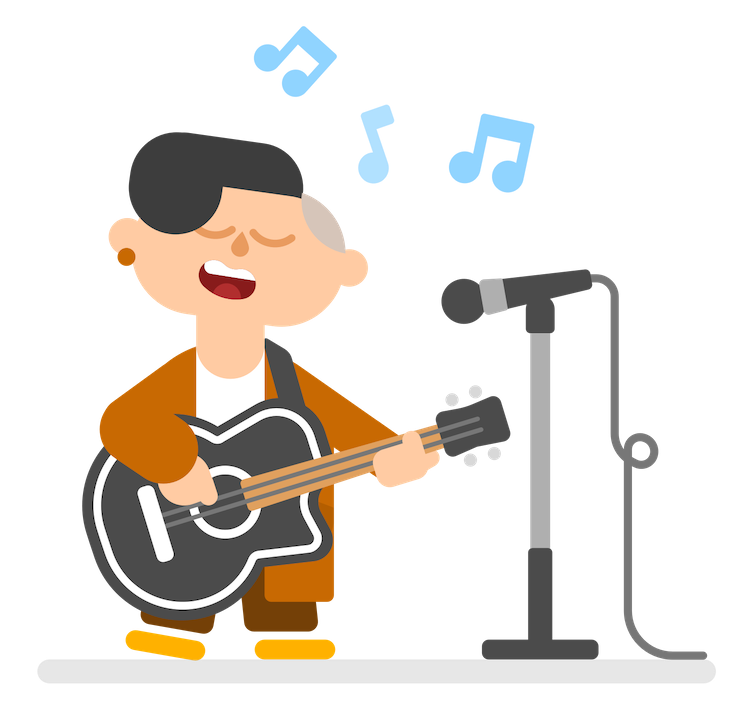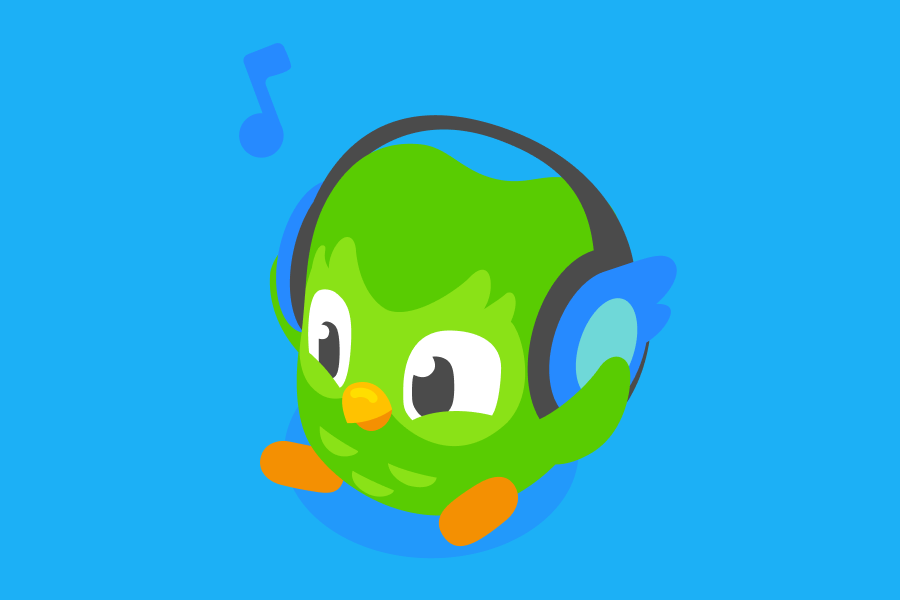If you tuned in to Duocon 2022, you watched Beninese musician (and polyglot!) Angélique Kidjo dazzle us with a performance that drew from multiple languages and cultures. Music is a unique tool for language learners because it's accessible to people of all ages and your appreciation of it grows as your proficiency increases!
Music is, by far, my favorite introduction to a new language. Movies and books can feel overwhelming at the start, because I want to catch every detail—but music is different because I can enjoy it without understanding everything! On our Relatos en inglés podcast, Juanes, a Grammy-award winning musician from Colombia, spoke about this exact experience. He fell in love with the music of Metallica and KISS without understanding what they were saying—he said all the lyrics just sounded like “someone chewing gum” to him!
Here's what you can learn from music and how to get started making your own language-learning playlist.
Music instantly connects you to culture
Music can be a mini-time capsule and an easy way to start learning about a place’s culture and history. I love learning about the mega superstars and classic songs from different cultures!
Ever wanted to know what driving around Tokyo in the 80’s sounded like? Well you can.
Who is the Jimi Hendrix (or Joni Mitchell, or Queen, or Beyoncé) of the language you're interested in? Find out by exploring a community's most influential musicians! Just last month, I learned about Chavela Vargas, a legendary Mexican ranchera singer, who released well over 30 albums in her lifetime!
Beyond just being a mini-time capsule, music can introduce you to what a place sounds like, right now. YouTube is a great place to start to hear the sounds and slang of today. I guarantee you’ll have a couple delightful “I didn’t know this existed?!” discovery moments. Like, did you know that there is a band that combines heavy metal with traditional Mongolian throat singing and instruments? Their name is The Hu and they've received the country’s highest award for promoting Mongolian language and culture to the world.

How to learn from music
There isn't a right or wrong way to learn from music. If you pick up some new words or phrases, that’s great. If you simply just get a little more motivated, it’s worth it! And of course, if you want to use music to dig into language, there's lots you can do. Here are some ways that I use music to help me learn.
First, I start with music I enjoy.
Learning with music shouldn’t feel like a chore. Start by listening to the same genres of music you already like—if you think love ballads are boring, don’t listen to them in another language! On Spotify, I like to search for a combination of a country that speaks the language I'm learning and the genre I want to listen to, like “Chilean Pop.” And if you already know some of the language, you might try some search terms in the language, too (maybe "música chilena"). More often than not, people will have already created a playlist for it.
Then, I read up about the artists.
After finding songs that I like, I try to find everything I can about the artist. I want to learn about where they are from and who their influences are, so I understand the cultural context of their music a bit better. Going down this rabbit hole leads me to learn about the history and culture of a community in ways that I would never have found on my own. This has also helped me find more music and more artists to add to my growing personal playlist as I learn who the musicians themselves take inspiration from! Start by looking for articles or news in your own language, but take a look at information in the new language, too—it's ok to not understand everything yet, but it can also be fun to start learning more music vocabulary this way!
Next, I pretend I’m going to karaoke.
When I really love a song or album, I study it like I would if I was to perform at karaoke. I listen to the songs with the lyrics in front of me, skipping back to catch lyrics I missed, and do this repeatedly until I feel comfortable enough singing along. This joint effort of reading and pronouncing really helps me learn a song and commit more of the vocabulary and grammar to memory. This practice also means I inevitably end up singing to myself in the language throughout the day!
Finally, I make the song part of my music routine.
Once I feel like I understand a song well, I add it into my usual rotation and new playlists I make. Listening again after a long hiatus becomes a nice, easy way to reinforce what I learned. I also find that I pick up more nuance later on, during the fifth or tenth listen, like double entendres or deeper meanings. This continued listening helps me deepen my understanding of how creative language can be!
What I'm listening to
What would this post be without some music? Spanish learners (and music lovers!) might enjoy this playlist of mine, which features some of the songs that have really helped me in my Spanish-learning journey. Here are a few of my favorites:
"Muerte en Hawaii" by Calle 13
A friend told me once that if I could understand the music of Calle 13, the record holder for the most Latin Grammy Awards ever, I could say I know Spanish. This song is where I started! The lyrics have a lot of fun vocabulary, opening with:
Yo he peleado con cocodrilos (I have fought with crocodiles)
Me he balanceado sobre un hilo cargando más de quinientos kilos (I have balanced on a thread carrying more than 500 kilos)
It's such an interesting mix of common vocabulary with surprising turns (not so different from Duolingo's own quirky sentences).
"Ojalá" by Silvio Rodríguez
Silvio Rodríguez is a Cuban artist known as one of Latin America’s best singer-songwriters. The repetition in this song is really great for following along and learning. Also, after learning this song, you'll never forget that you use the subjunctive after ojalá!
"Nunca es Suficiente" by Natalia Lafourcade & Los Ángeles Azules
This cumbia interpretation of Natalia Lafourcade’s song is one of my favorites because the chorus is so easy to follow. It is also a great introduction into the genre of cumbia and the many great works of both artists!
Make a soundtrack to study by!
Music is a great way to familiarize yourself with the language you are learning and the culture of those you'll be communicating with! For more music and language learning inspiration, check out our Songs with Duo music performance series that features artists' performances in different languages!
